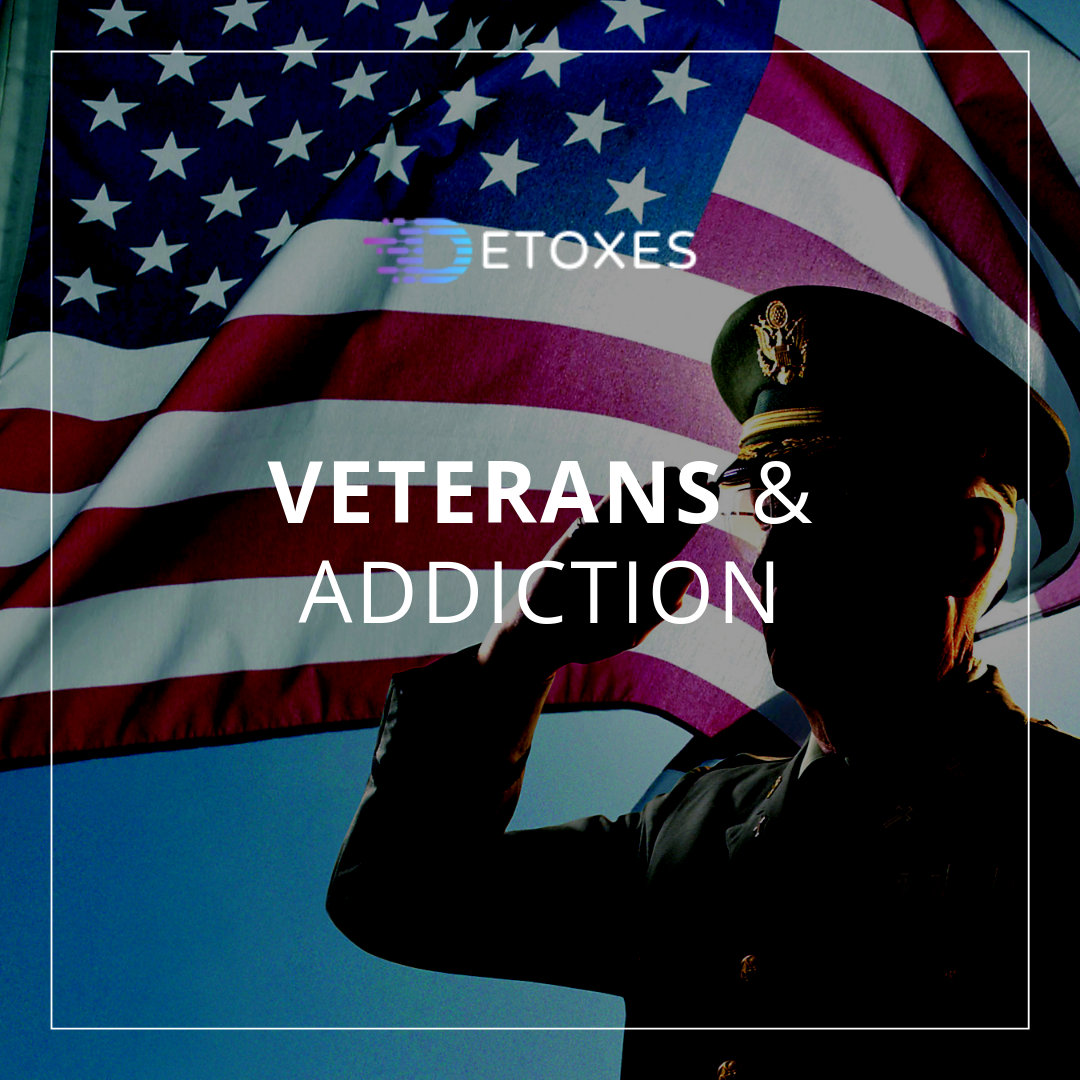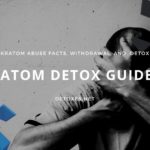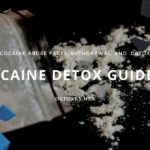Veterans & Addiction
America’s service men and women exhibit heroism, courage, and discipline. They see frightening and harrowing things and are often seriously wounded, both physically and emotionally. Whether it’s after a tour of duty in a combat zone or while adjusting to the discharge to civilian life, 1 in 15 veterans abuses a controlled substance, according to the latest National Survey on Drug Use and Health10. This is a community article for these veterans with an addiction.
1.5 million, or 6.6 percent of veterans 17 or older are in the process of struggling with the abuse of alcohol or drugs. While this is slightly lower than the national average, it is alarming that those who have suffered trauma are not getting the counseling they need that would prevent them from turning to drugs and drink.
Post-Traumatic Stress Disorder and Substance Abuse
Post-Traumatic Disorder is not just some antiquated term pertaining to Vietnam veterans. While PTSD hasn’t stayed in public discussions as much as it should have, it doesn’t go away. PTSD will always be present among people who have seen (among other calamities) combat.
To look at the prevalence of PTSD among veterans, roughly 20% of veterans of the various recent operations in Iraq suffer from it, keeping in mind that it could still be triggered later in these veterans’ lives.
A 2018 study published in the Journal of Abnormal Psychology2 looked at veterans who suffered from both PTSD and AUD (alcohol use disorder). They found that an unfortunate symptom of PTSD suffered by many veterans was lability, wild mood swings. They found a correlation between these sudden shifts in mood and a desire to turn to drink as a result.
Other traits of PTSD include memory problems, a low sense of self-worth, flashbacks, and various self-destructive behaviors, including, of course, substance abuse. In particular, binge drinking is a frequent outcome of PTSD. Roughly 1 in 3 vets who seek help for PTSD have a dependency on a substance.
Therefore, we see people in the grips of diagnosable syndromes turning to drugs and alcohol for relief, and thereby putting themselves into the grips another syndrome.
What Drugs are Veterans With an Addiction Most Prone To?
Later, we will talk about alcohol abuse among veterans in general; we will go through each substance individually. But let’s pave the way for that by overviewing the substances that veterans most commonly use.
Benzodiazepines (Ativan, Valium, Xanax) – These drugs and sedatives and often taking by people with trouble sleeping; their use among veterans can spring from this need, yet can also relate to PTSD.
Opioids (Fentanyl, Vicodin, OxyContin, Lortab) – Veterans may have ongoing pain from injuries from their service; many take blue-collar jobs that can be rough on one’s body; some may turn to these powerful pain pills to treat emotional pain.
Sedative-Hypnotics (Ambien) – Whether it is PTSD or another form of stress, many veterans have terrifying dreams, trouble sleeping, or bad memories in late-night silence. They may turn to sedative-hypnotics that are marketing for help sleeping.
Guide to Abuse By Substance:
Benzodiazepines
1) Ativan and Veterans with an Addiction
Ativan is the product name for the drug Lorazepam, a power benzodiazepine, which is a type of sedative. One of the chief reasons Ativan is so sinister is that it is both fast-acting and long-lasting. People often begin using it to treat high anxiety. Some surgeons administer it to patients in the days before surgery to lower their anxiety about the procedure.
Ativan can slow the workings of the brain and nervous system, which is how it works with anxiety. It also has pain-relieving benefits for maladies such as muscle spasms and severe aches.
The drug has gained a reputation among veterans as a remedy for PTSD. Many veterans turn to the drug for help with sleeping and some of the other surface-level symptoms of the disorder. In fact, roughly 30% of military doctors are still prescribing it for this malady.
However, newer research has shown that it is best used for anxiety caused by reasons other than PTSD, for seizures and similar issues. The current prevailing belief is that benzos of any kind are not the right solution12.
One reason for this is that Ativan has many major side effects. These include:
- Mental fogginess or confusion
- Trouble breathing
- Irritability or anger
As is the case with any sedative, accidental overdoses pose a serious risk.
It’s important, though, to look at the big picture. One of the serious issues that veterans—and anyone turning to sedatives—face is psychological dependency. All too often, people turn to medications to do the work of emotional growth for them. They unconsciously believe that they can’t do it alone.
When dependent people can no longer afford drugs or can’t obtain the substance for any reason, they become panicked and their emotional state undergoes further damage. This reinforces the psychological dependence. If the person should get back on the medication, he or she will start taking even more, which will quickly lead to a physical dependence that can be remedied only by a rehabilitation program.
2) Valium and Veterans with an Addiction
The clinical name for valium is diazepam, which you may recognize as a chief remedy for alcohol withdrawals. We thus see healthcare professionals in recovery services prescribing this drug. It can be prescribed by doctors for anxiety and is known to have moderate to no side effects among the general population.
Veterans and families of veterans must be aware, however, that the use of Valium by someone suffering PTSD is very dangerous. 2018 studies demonstrate that taking Valium when struggling with PTSD greatly increases the likelihood of suicide8. This is true among people who suffer from chronic obstructive pulmonary disease in addition to PTSD.
One of the reasons for this correlation is that a common side effect of Valium is depression. That might seem strange to people, since a common conception of sedatives—even tranquilizers—is that they make people feel blissful. What is really happening is a slowing of the workings of the mind. That is where a sluggishness—and often a depression—can come in.
But, whether or not these medications are appropriate for PTSD is only half of the story. Even if they were effective, these drugs are highly addictive, largely because of their psychologically-addictive properties, and this affects only too many servicemen and women.
3) Xanax and Veterans with an Addiction
Xanax is known to pharmacists as Alprazolam. When doctors prescribe it, it’s often for Generalized Anxiety Disorder. The biggest takeaway concerning Xanax is that it is included in the warnings about suicide that apply to Valium.
A particular nasty edge to Xanax is that a user develops a tolerance way too fast. People are prone to a particularly harsh psychological dependence on it, obsessing over it and having a hard time feeling pleasure in anything when not taking it.
Withdrawals from Benzodiazepines when a Veteran Has an Addiction
One of the severe and very dangerous issues concerning the use of benzos is what happens when one stops. Not only do withdrawals cause a person to dive back into the substance as soon as possible, but they can and often do become very serious physical conditions.
Withdrawals cause such difficult symptoms as14:
- Anxiety
- Insomnia
- Restlessness
- Irritability
- Memory deficits
- Muscle pain
These occur to a larger degree when the tapering off of benzodiazepines is too sudden. People who have developed a dependency on any diazepine are strongly encouraged to enter a rehab facility. There, they can at least have quality support and care while facing the inevitable withdrawals.
However, let’s take a step back to recognize how tragic this whole scenario is. Whether a military veteran is suffering from PTSD or is suffering depression or angst due to any cause, use of benzodiazepines should be short term only. However, as discussed above, they may not be a safe medication for those with PTSD. Common anti-depressants like Selective Serotonin Reuptake Inhibitors (SSRIs, such as Prozac, Zoloft, etc.) are much more appropriate.
Opioids and Veterans with an Addiction
1) Fentanyl and Veterans with an Addiction
Probably the most infamous opioid, Fentanyl is 50-100 times stronger than morphine. It is similar in molecular structure to heroin, the illicit drug derived from morphine.
This drug is a good illustration of the particular struggles our service men and women face. The Military Medicine article “Pain Management and Opioid Risk Mitigation in the Military”4 tells us that military doctors issued 3.8 million prescriptions in 2009, which is quadruple the number from the beginning of the decade, in 2001.
Military personnel are of course subjected to pronounced injuries, often requiring surgery. One can see why analgesic opioids will be prescribed. However, the addictive nature of these drugs raises serious concern. The author of “Pain Management…” found a direct correlation between the introduction to opioids and their subsequent misuse, meaning use without a prescription or in greater quantities than prescribed. The Department of Defense mounted a comprehensive study, unearthing that opioid misuse nearly tripled from 2005-2008. As one example, fully 21% of active Army personnel admitted to having abused opioids in the previous year.
Once a person leaves the military, this doesn’t mean he or she leaves fentanyl and others behind. These opioids may be used by veterans because of the “high” they produce—physical pain may no longer be an issue. And, psychological addiction is common.
Fentanyl can cause, on the short term, side effects such as nausea, trouble breathing, and constipation9. Over the long term, one of the biggest dangers of the use of this opioid is developing tolerance and having trouble feeling joy or pleasure when not under the influence.
Another danger, of course, is an overdose, which is often deadly.
Withdrawals from trying to quit fentanyl includes symptoms such as involuntary movements, insomnia, cold flashes, and bone pain, according to the National Institute on Drug Abuse8.
2) OxyContin and Veterans with an Addiction
The medical name for this popular opioid is oxycodone, a derivative of thebaine, an opiate alkaloid and a part of the poppy plant13.
People seek out OxyContin for the feelings of relaxation and euphoria it creates. According to the 2017 Report, Drugs of Abuse>, published by the DEA (Drug Enforcement Association)11, abuse of OxyContin takes the form of dissolving tablets and injecting them; or putting a tablet on a sheet of foil, heating it with a flame and inhaling the vapors.
Damage done by prolonged Oxy use includes constriction of papillary muscles (which are in the heart’s ventricles); severe liver damage; constipation; respiratory depression.
Symptoms of an overdose are clammy skin, intense fatigue, and confusion.
As of 2009, Oxycodone was the second-most prescribed opioid in the Army (with hydrocodone, or Vicodin, occupying third place).
3) Vicodin and Veterans with an Addiction
Hydrocodone is a drug many are familiar with. You may have been prescribed this opioid by a dentist, only to find that local pharmacies no longer stock it. This is due to a perceived misuse or unnecessary prescriptions. Like other opioids, hydrocodone produces a definite sense of euphoria and usually a mellowness, and is often used as though it’s a “street drug” for this sensation.
Vicodin is unique in the sense that it contains acetaminophen, a non-narcotic. It is the hydrocodone that is addictive and opioid withdrawal symptoms can be painful.
Excessive use of Vicodin is dangerous primarily because it slows the heart rate and can induce a coma. One may recognize that a loved-one is abusing Vicodin (or Norco, another brand of hydrocodone) by symptoms such as nausea, intense fear and confusion, and convulsions.
Sedative-Hypnotics and Veterans with an Addiction
Ambien and Veterans with an Addiction
Ambien is the common name for Zolpidem, a benzodiazepine receptor agonist (activator). Ambien is prescribed for insomnia, which is a common problem among those suffering PTSD. Further, soldiers or veterans may have this problem even if they don’t have PTSD.
A 2018 study1 of Iraq and Afghanistan veterans tells us that 7.6% of these soldiers (37,422 in total) were prescribed zolpidem in FY 2014. Perhaps more concerning is that the average prescribed length of use of this drug was 189 days. The study’s findings were “high-risk zolpidem prescribing practices that put Iraq and Afghanistan Veterans at risk for adverse effects of zolpidem and poor health outcomes.”
One of the chief reasons that zolpidem is so heavily prescribed is that, wisely, military medical personnel are guided to move away from benzodiazepines. However, as noted in the above study, Ambien causes cognitive impairment and dizziness, and is one of the psychiatric drugs that most leads to emergency-room visits.
Ambien is also frequently associated with blackouts, during which time a person may get into a traffic accident, fall, or do or say things that can damage one’s friendships, reputation, or career.
2) Alcohol and Veterans with an Addiction
Having looked at prescription medications that often lead to non-prescription use after veterans are hooked, we will now look at the legal but very dangerous substance, alcohol, which is highly abused among veterans.
Alcohol Culture in the Military
When examining alcohol abuse among veterans, we have another opportunity to examine how a person’s life in the military strongly impacts her or his life upon discharge. This is true given the fact that there is a strong culture of drinking in the military.
To quantify this, the article “Substance Use Disorders in Military Veterans: Prevalence and Treatment Challenges”3 quotes the National Survey on Drug Use and Health, which reports that 56.6% of military vets reported alcohol use in the previous month, as compared to 50.8% in the civilian population. Further vets engaged in heavy drinking at a rate of 7.5% to 6.5% of the general population. Alcohol abuse is higher among veterans or military personnel 18-25 than among the civilian population, and the rate of Alcohol Use Syndrome is 10.5% among males and 4.8% among females.
Another study demonstrated heavy alcohol use in military personnel by showing that it cost the military $1.12 billion in 20066. Military Alcohol abuse is also estimated to lead to a staggering number of arrests annually5.
The literature gives us some interesting insights into the culture in the military that can promote this level of drinking. For one, a community of young adults will almost certainly turn to drink. The people are often dislocated and away from local communities, relationships, and activities of their permanent or previous lives. It is natural to turn to drink in a situation like this, and this mentality, present in enough personnel, creates a party atmosphere. This is seen as a good option to escape a strict and tense environment, as well as one that, in the case of combat, involves danger.
The article “Substance Use…”3 illuminates the idea that many military personnel suffer from emotional disturbances of some kind, including depression or trauma from an abusive relationship that had been present in their personal lives. A lot of young people join the military to remove themselves from these situations, yet the psychological effects remain. These can be made worse by PTSD or less severe emotional trauma often present in military scenarios.
Frequently, alcohol abuse is accompanied by PTSD or depression, or other similar conditions. A complicated web is created in which, temporarily, the alcohol can appear to be a cure for these other negative feelings. In fact, veterans often turn to drink, specifically in response to negative memories. Multiple tours of combat duty increase the likelihood of abuse of any substance, including alcohol.
Dangers of Alcohol Use
There’s no question that veterans are at-risk populations for several terrible consequences, including, in addition to substance abuse, homelessness, severe mental illness, and even suicide. This is no coincidence; alcohol abuse often triggers some of these other problems. Substance abuse disorders among veterans greatly increase the chances they will attempt suicide; this Army report reveals that 30% of completed suicides among this population came after drug or alcohol use7.
There is only an extent to which the various studies isolate alcohol’s impact on suicides apart from other drugs. One study that does so was conducted by researchers at the University of Michigan7. One devastating point in this study is that, overall, twenty veterans take their own life per day, which is much higher than the general population. Overall, the substances most correlated with suicide were sedatives and opioids. The authors of this study drilled down a bit further. They found that when one corrected for issues such as age and mental health issues (meaning focusing specifically on substances) only alcohol and opioids caused a greater risk of suicide.
It is also true that only opioids and alcohol—not sedatives—increased the chances of suicide among women.
Another major negative outcome of alcohol abuse can be homelessness. While a large number and percentage of homeless veterans have substance abuse problems, it is more difficult to determine cause and effect and to know what percentage of those who suffer substance abuse disorders will go on to become homeless.
While homelessness may be a severe outcome and while many veterans who abuse alcohol may never be in great danger of it, it is such a tragic circumstance that it needs to be considered among the dangers of drug and alcohol abuse.
The Need for Veterans with An Addiction to Seek Treatment
Treatment is definitely available for veterans with an addiction, whether from VA hospitals, other veteran-specific organizations, or general rehabilitation centers. However, all too often, veterans do not take the help that they need. Many live in rural areas, too far from VA facilities. They may not be aware of options closest to them.
However, the stigma, not only of the addiction but of being a veteran with the dependency is a huge stumbling block. People don’t want to feel like another statistic, and they may have a hard time admitting that substance dependency is taking a toll. As former military personnel, veterans have pride and have toughed out many serious circumstances. They may consider it a weakness to admit that drinking or drug use is getting the better of them. They will hold on to the idea that their use is social or is justified by PTSD or physical pain, and then, to them, it’s not really a problem.
That is why people in the lives of these veterans must persistently keep them aware of options available to them. Going through a rehab program is life-saving for many veterans with an addiction.
References
- Amuan, M.E. Eapen,B.C., Jaramillo, C.A., Pugh, M.J. Shayegani, R. & Song, K. (2018). Patterns of zolpidem use among Iraq and Afghanistan veterans: A retrospective cohort analysis. PLoS. Retrieved March 4, 2019.
- Andal, K. Grimm, K.J. Keith, J.A. O’Brien, C. Simons, J.S. Simons, R.M. & Stoltenberg, S.F. (2018). PTSD symptoms and alcohol-related problems among veterans: Temporal associations and vulnerability. Journal of Abnormal Psychology. Retrieved March 4, 2019.
- Back, S.E. Brown, D.G. Lancaster C.L. & Teeters J.B. (2017). Substance use disorders in military veterans: prevalence and treatment challenges. doi: 10.2147/SAR.S116720. Substance Abuse Rehabilitation. Retrieved March 4, 2019.
- Bebarta V.S. Marino, E.N. Ramos, R.G. Sharpe Potter, J. Turner, B.J. (2014). Pain management and opioid risk mitigation in the military. Military Medicine. Retrieved March 4, 2019.
- Chard, K.M. Ph.D. & Schumm, J.A. Ph.D. (2018) Alcohol and Stress in the Military Alcohol Research: Current Reviews, Volume 34, Issue Number 4. Retrieved March 4, 2019.
- Dall, T.M. Fagan, N.K. Harwood, H.J. Olaiya, S.T. & Zhang, Y. (2009) Economic implications of reduced binge drinking among the military health system’s TRICARE Prime plan beneficiaries. Military Medicine. Retrieved March 4, 2019.
- Deputy Chief of Staff. (2010). Army Health Promotion Risk Reduction Suicide Prevention. ARMY HP/RR/SPREPORT2010. Retrieved March 4, 2019.
- Healthday. (2018). Xanax, Valium Tied to Higher Suicide Risk in COPD Patients With PTSD. Retrieved March 4, 2019.
- National Institute on Drug Abuse. (2019). What is Fentanyl? Retrieved March 4, 2019.
- Substance abuse and Mental Health Services Administration. (2018). National Survey on Drug Use and Health.. Retrieved March 4, 2019.
- U.S. Department of Justice Drug Enforcement Administration. (2017). Drugs of Abuse: A DEA Resource Guide. pp.40-48. Retrieved March 4, 2019.
- U.S. Department of Veterans Affairs. (2018). Benzodiazepines and PTSD. PTSD: National Center for PTSD. Retrieved March 4, 2019.
- U.S. National Library of Medicine. (2019) Thebaine. PubChem. Retrieved March 4, 2019.
- World Health Organization. (2009). Withdrawal Management. Clinical Guidelines for Withdrawal Management and Treatment of Drug Dependence in Closed Settings. Retrieved March 4, 2019.
Medically Reviewed: September 25, 2019

All of the information on this page has been reviewed and verified by a certified addiction professional.








